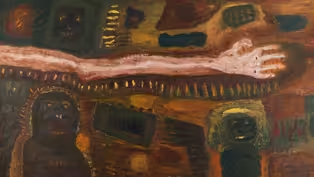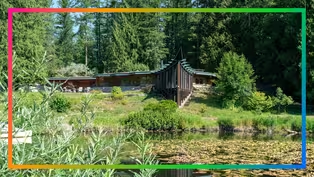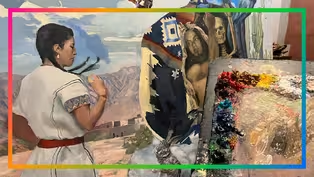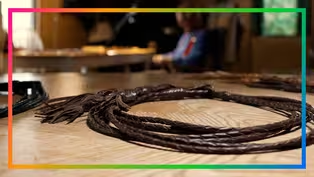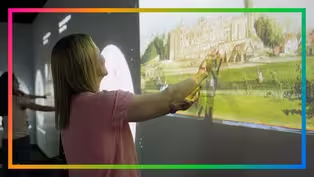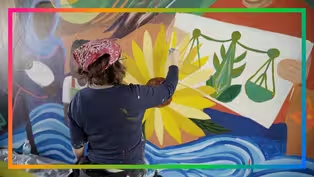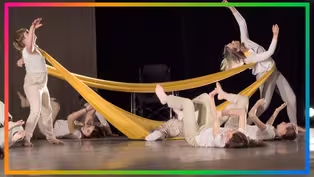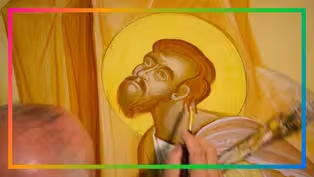
Closer to God
Season 1 Episode 2 | 8m 1sVideo has Closed Captions
An ancient art form uplifts an historic Greek Orthodox Church in Pocatello, Idaho.
Watch as expert iconographers from Greece use an ancient art form to enhance the spirit of the Assumption of the Blessed Virgin Mary Greek Orthodox Church in Pocatello. Learn more about the practice of iconography and its deep significance for practitioners of the Greek Orthodox faith.
Problems playing video? | Closed Captioning Feedback
Problems playing video? | Closed Captioning Feedback
createid is a local public television program presented by IdahoPTV
The Friends of Idaho Public Television

Closer to God
Season 1 Episode 2 | 8m 1sVideo has Closed Captions
Watch as expert iconographers from Greece use an ancient art form to enhance the spirit of the Assumption of the Blessed Virgin Mary Greek Orthodox Church in Pocatello. Learn more about the practice of iconography and its deep significance for practitioners of the Greek Orthodox faith.
Problems playing video? | Closed Captioning Feedback
How to Watch createid
createid is available to stream on pbs.org and the free PBS App, available on iPhone, Apple TV, Android TV, Android smartphones, Amazon Fire TV, Amazon Fire Tablet, Roku, Samsung Smart TV, and Vizio.
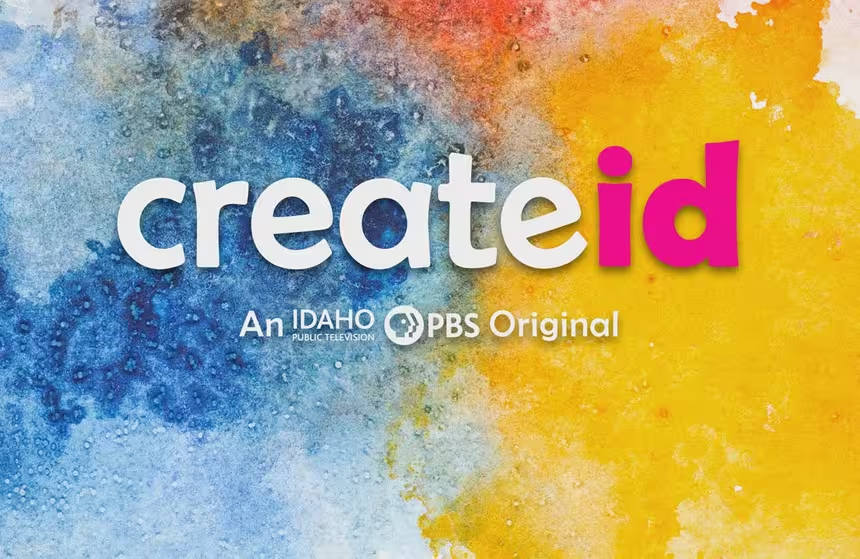
createid on YouTube
createid celebrates the unique talents of Idaho creators through lively video pieces. See exclusive content and join the community on Facebook, Instagram and YouTube. Subscribe now!Providing Support for PBS.org
Learn Moreabout PBS online sponsorshipMore from This Collection
createid
SARA: A Life in Dreams and Symbols
Video has Closed Captions
An illuminating look at the life and work of Idaho artist Sara Joyce. (30m 47s)
Video has Closed Captions
Unicorn Farm is a one-of-a-kind home in northern Idaho. (7m 50s)
Video has Closed Captions
Painter Lupe Galván melds his indigenous heritage with his love of European painting. (6m 56s)
Video has Closed Captions
Watch as Idaho leather braider Mike “Hooey” Storch crafts a traditional hat band. (5m 43s)
Video has Closed Captions
Step inside the immersive, touchscreen environment of the Stein Luminary. (4m 51s)
Video has Closed Captions
When the voices for hate get loud, the voices (and paint brushes) for love get louder. (6m 2s)
Flipping the Script: Open Arms Dance Project
Video has Closed Captions
A profile of the Open Arms Dance Project, an inclusive, multi-generational dance company. (7m 48s)
Providing Support for PBS.org
Learn Moreabout PBS online sponsorship[man chanting in Greek] Kordis: You have to have a connection with what you paint.
I don't think that you can render the deep spirit of the work if you are not close to that.
For me, this is my, I would say, mother artistic language.
[music] Father Zosos: When we were in the renovation, I felt, “Why not put icons in it that never had any for a hundred years?” It's bringing the historic tradition to the present.
[music] Rockwood: It isn't just a picture.
They tell a story.
They help us understand things.
They don't make things up and paint it on the wall.
It's things that we actually understand from years way back that actually occurred.
Zosos: The souls of these individuals are still alive, as our souls are.
So there is a relationship.
We just don't look at them.
We pray to them.
We ask them for their intercessions.
Kordis: It's a very old technique.
And the idea is that we mix a medium and pigments, which are basically oxides, different oxides.
And this way we create a paint.
We want to have a very simple palette, so when you enter the space, these colors to be peaceful and reconciled, and in unity.
It is a complete system of painting.
I would say perfect system.
Panou: Every time is different.
Every church is different.
You have to study and work and persist.
We all do everything in this group, but I usually make like the ornaments and all the small details around.
It's like calligraphy, actually.
That's why I like it.
Yes.
I have this really bad habit to put every color on me, just dry my brushes on me.
It's not very practical.
[laughs] I have tried so much to stop it.
And then I do it again and again.
[laughs] It's my style.
Yes.
I have to accept it.
[laughs] [music] Goodner: It's very moving.
It's very moving.
It's amazing how fast they're doing this and how beautiful it is.
It's stunning.
All of these saints, they're people.
And I feel like they're friends and they're helping me.
Zosos: It takes you a little while sometimes to appreciate them because their faces are different, their hands are different.
But that's because they've elevated themselves; they've grown closer to God, to a place that we can't understand right now.
Kordis: Smiling or joy or sorrow is something that is temporary.
That - it's not there forever.
So we, we try to render such things through movement.
The depth in Byzantine painting is in front of the icon, it's not in the background.
We want through this painting to give spectators the sense that everything is here in present.
If you have a movement towards this direction, then you have immediately another movement to the other direction.
This way, actually painter creates a cone, a visual, iconic cone in front of the icon So when the spectator enters this cone, has the sense that he's inside the icon.
Wherever you stand, he's looking at you.
And if you move, he is following you.
In every church, the most interesting and difficult part definitely is the icon of Jesus in the dome, which is sometimes - it's very big, very huge and very difficult to handle because it's a big artwork.
We are very close.
Rockwood: People came forth with all of the money that it took to do this.
[Greek music] Zosos: Our biggest fundraiser has been the Greek festival.
It's one of the largest, well-attended events in the summer.
[chanting] Iconography has existed from the beginning of the Christian church.
In the early church, they used to use the yolk of an egg with powder paint to do this.
It’s laborious work.
There's like three or four or five different levels of paint that go on this.
And it's beautiful.
When you enter an Orthodox church and you come from the secular world outside and the door closes behind you, you know you're in the presence of God.
You know that it's special.
Help us, save us, have mercy upon us and keep us, O God, in your grace.
[audience responds] Goodner: This is the way it should be.
When you walk into an Orthodox church, you should feel this communion of saints and ordinary people today and the feeling of history.
Kordis: We hope that they will be inspired.
They will be able to pray better or more in this peaceful space.
[bell ringing] Zosos: I have to tell you, it brings tears to my eyes.
I get emotional because, you know, as you get older I think you want to get closer to God.
And this surely is a way of doing that.
[singing and bell ringing]
Master Iconographer George Kordis Timelapse
Video has Closed Captions
Clip: S1 Ep2 | 1m | Master iconographer George Kordis paints an icon of Jesus and the Burning Bush. (1m)
Providing Support for PBS.org
Learn Moreabout PBS online sponsorshipSupport for PBS provided by:
createid is a local public television program presented by IdahoPTV
The Friends of Idaho Public Television
